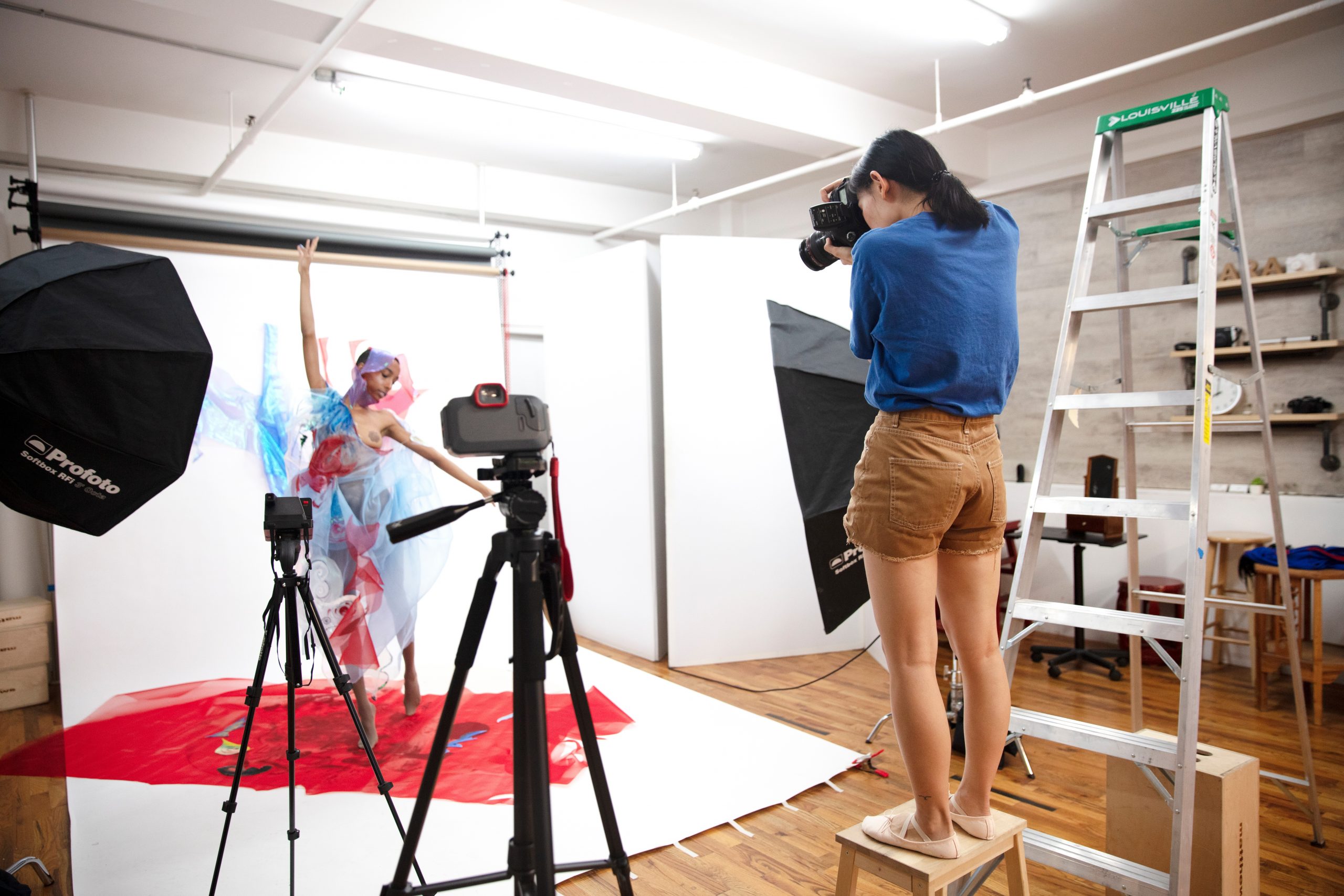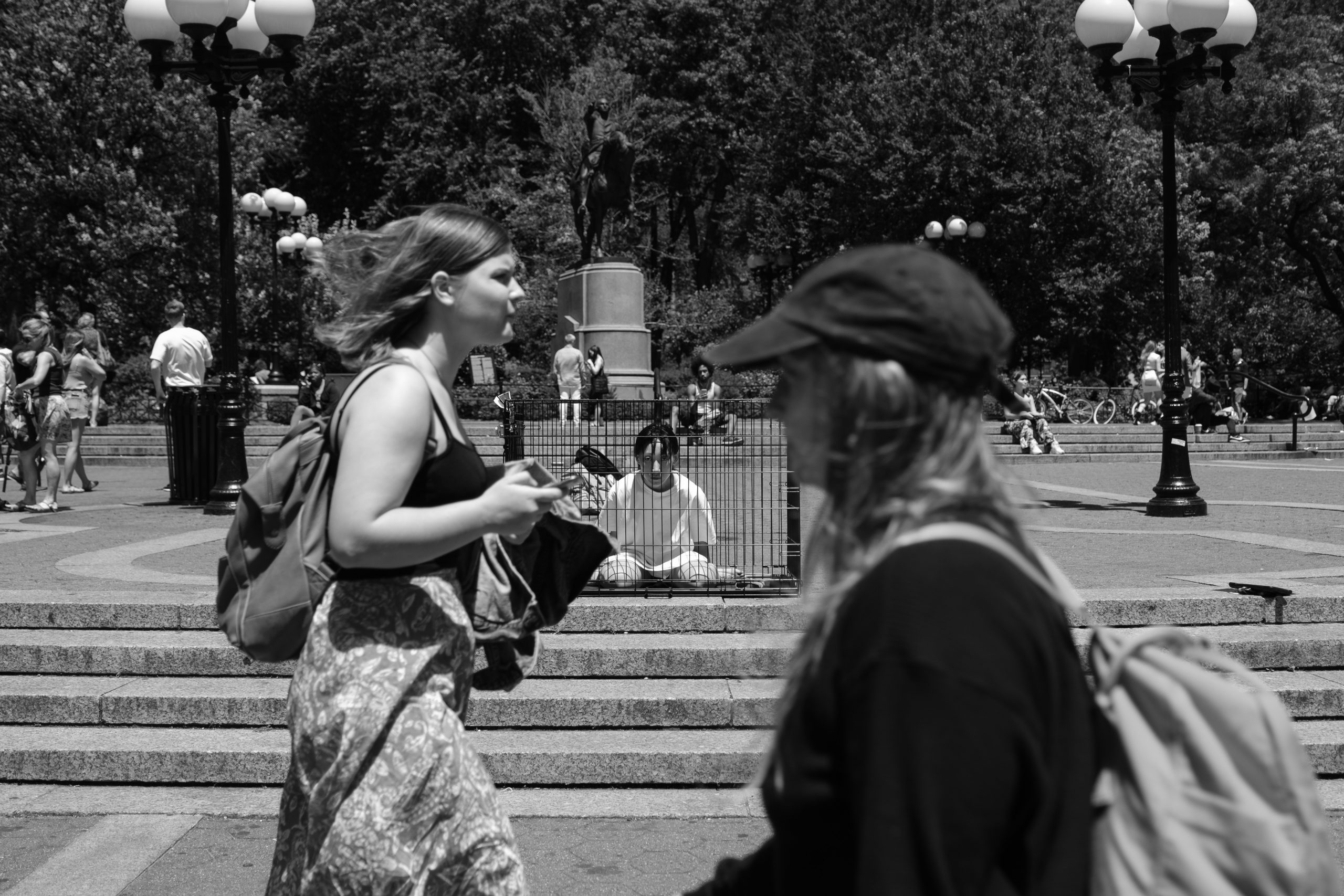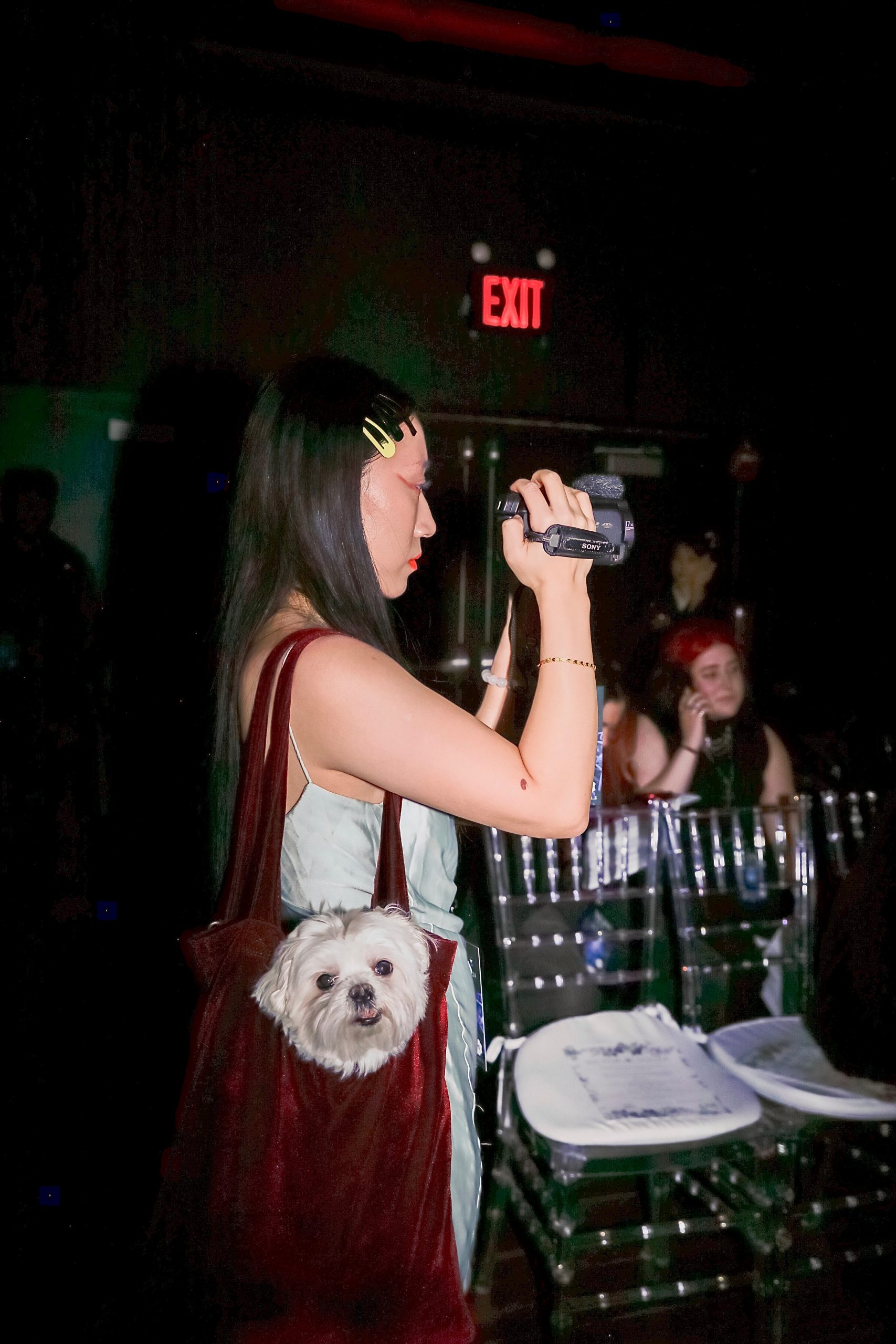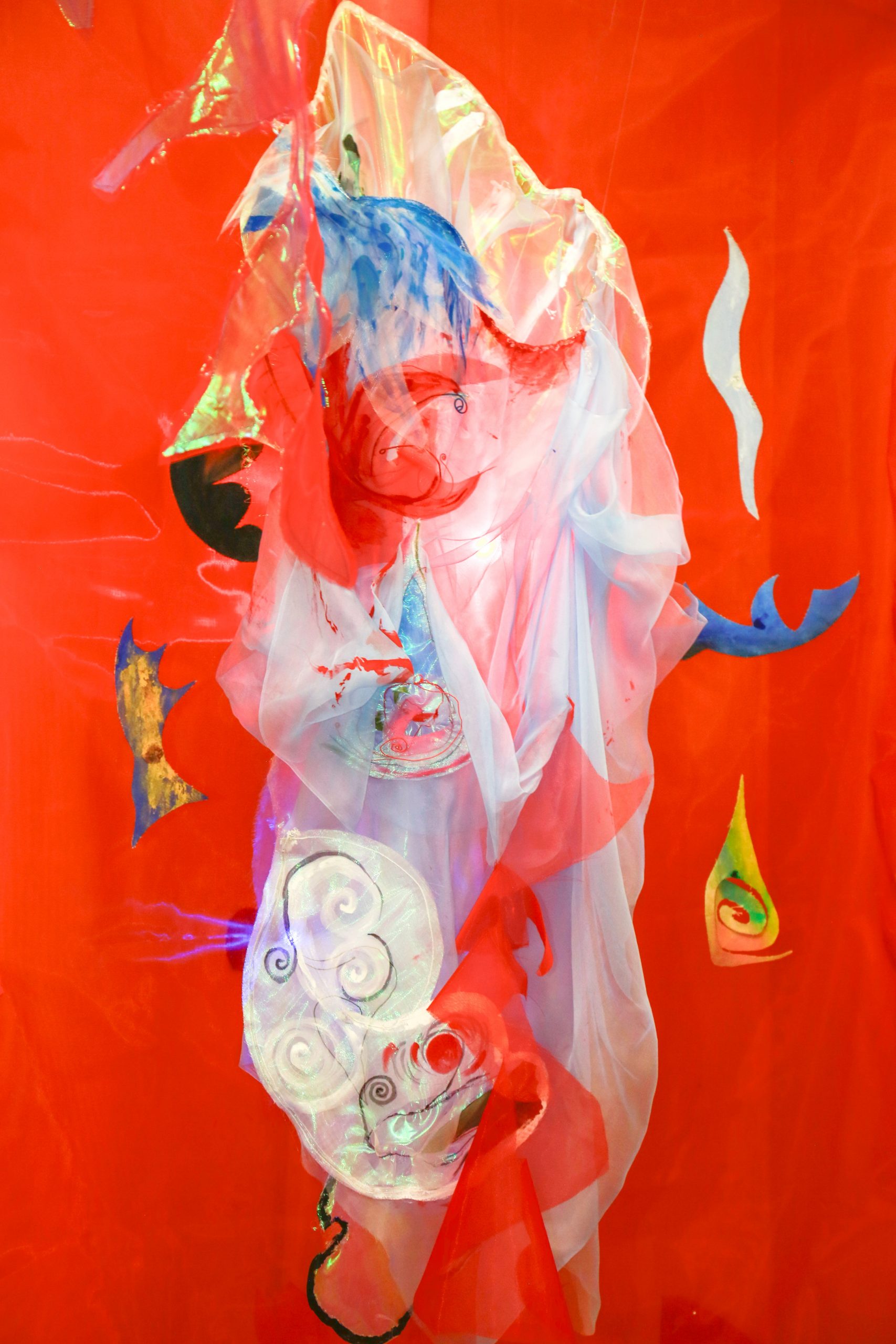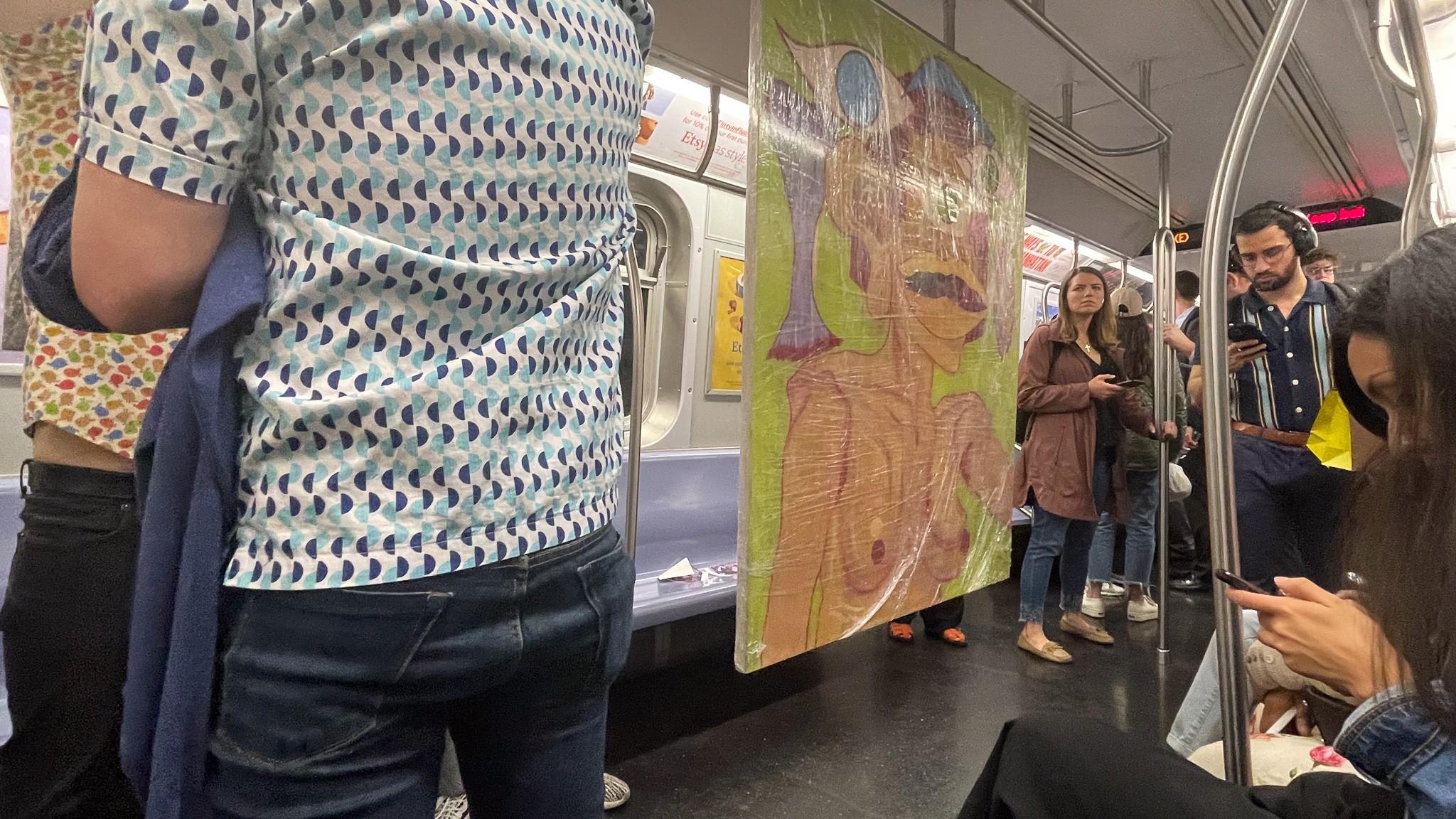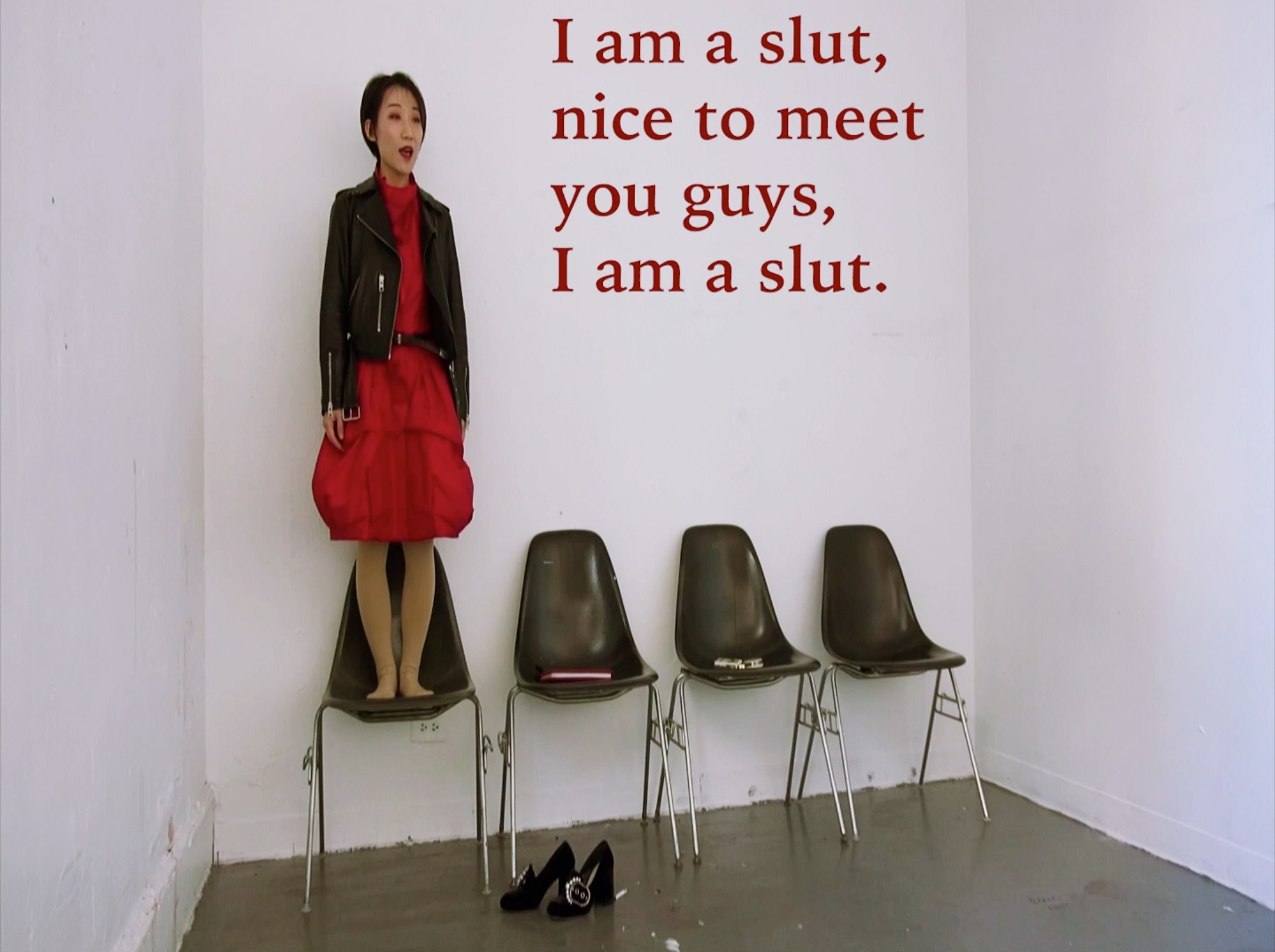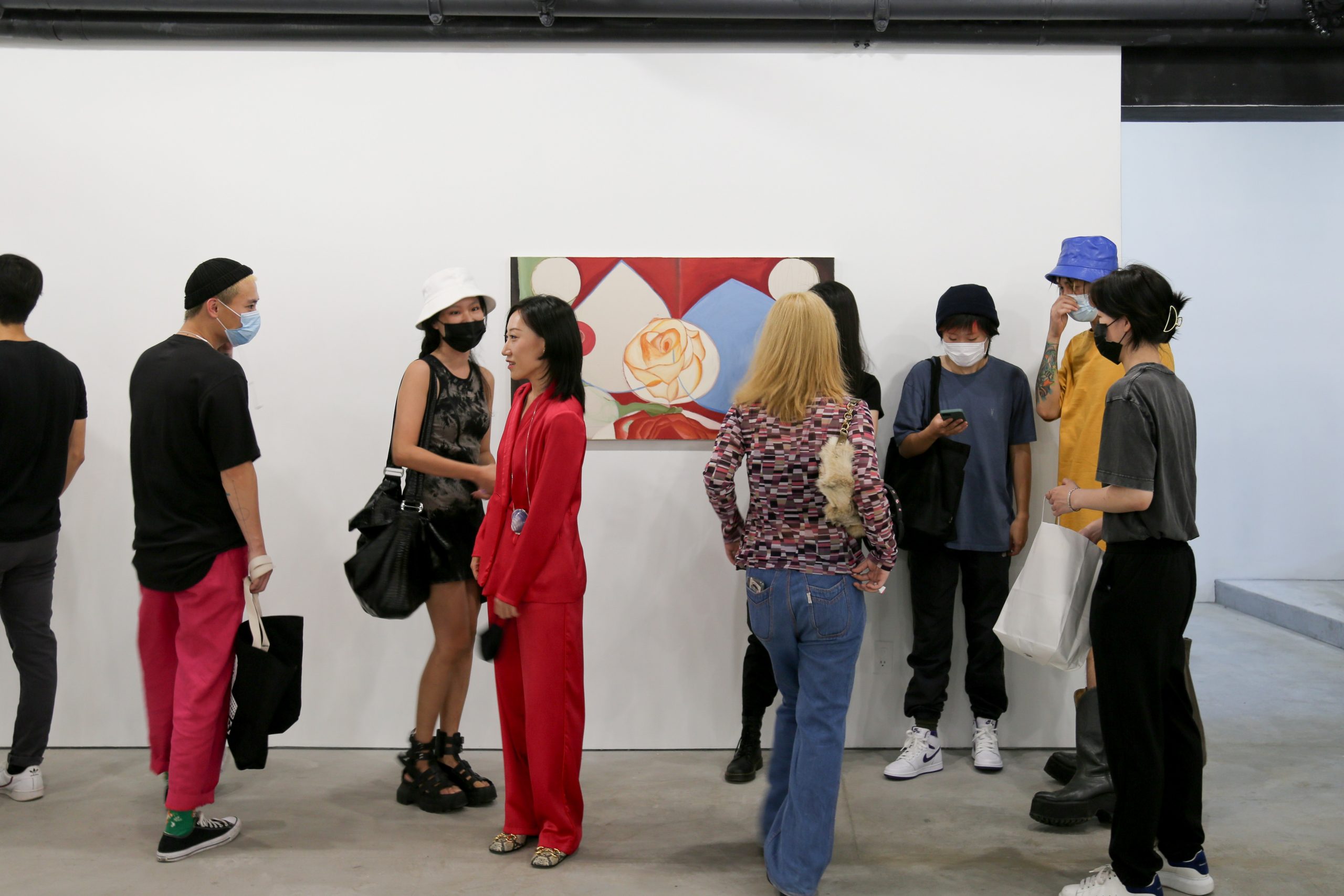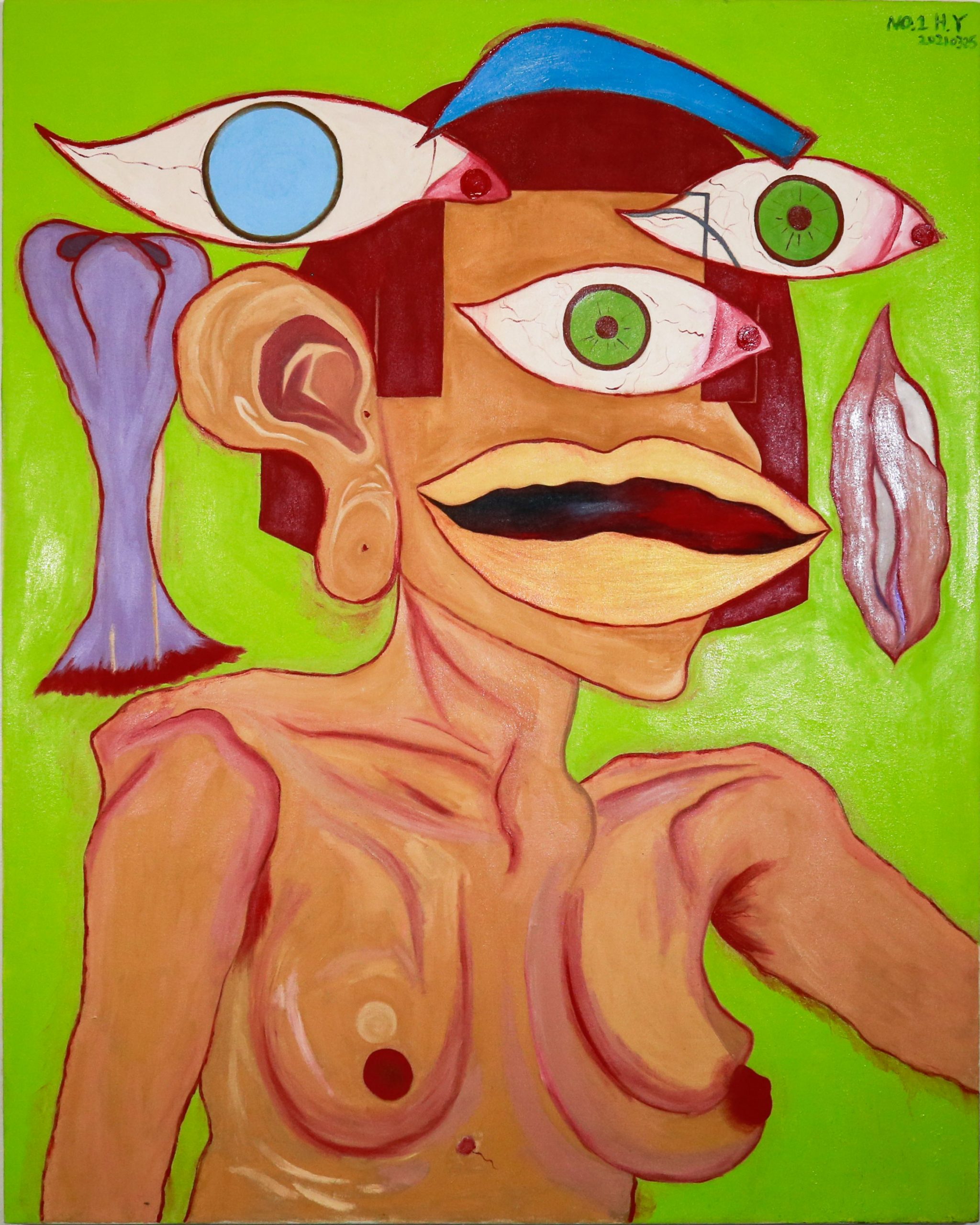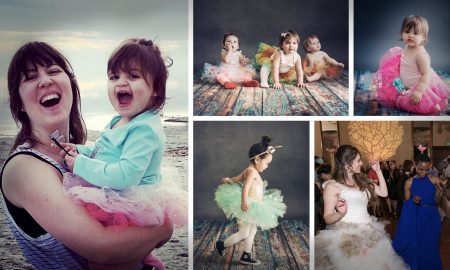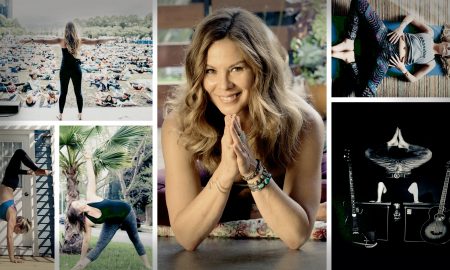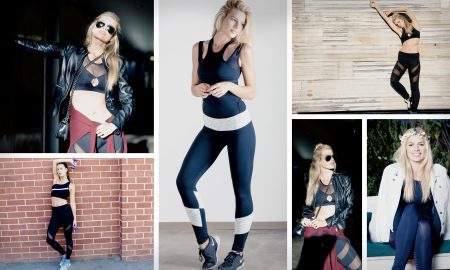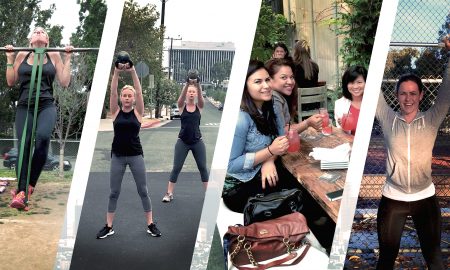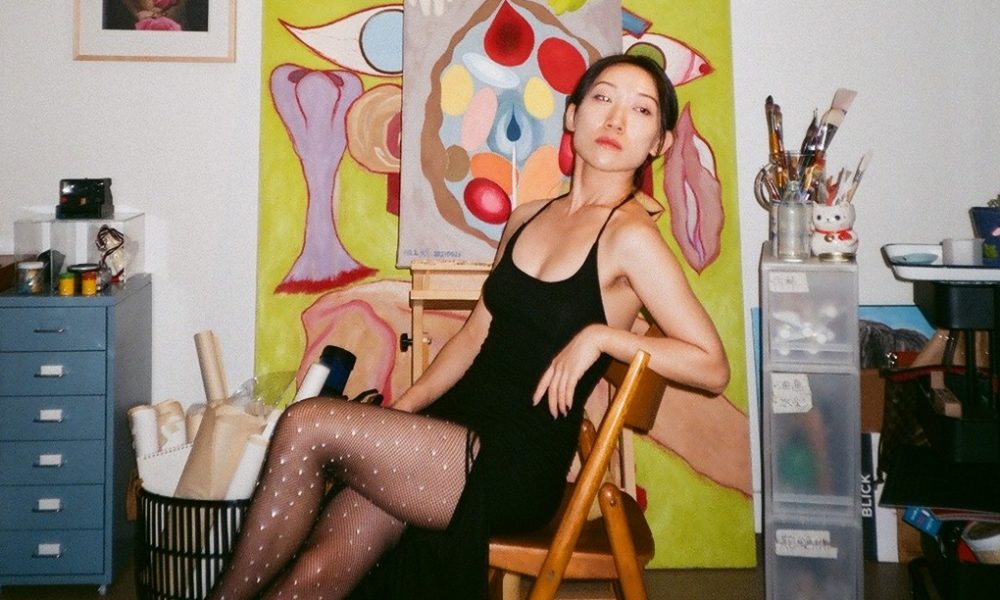

Today we’d like to introduce you to Hedy Zhang.
Hi Hedy, so excited to have you on the platform. So, before we get into questions about your work life, maybe you can bring our readers up to speed on your story and how you got to where you are today.
My journey from Xi’an to New York is a tale of transformation, resilience, and discovery. Born in 1994 in Xi’an, a cradle of Chinese civilization and history, I was raised by a pivotal feminist single mother. Her perspectives and encouragement were my first lessons in breaking societal norms and exploring the world beyond traditional confines. At the age of nine, standing on her shoulders at the Louvre Museum, I peered at the world’s artistic heritage through curious eyes, igniting a lifelong passion for art and its potential to challenge and change.
The decision to move to New York in 2016 marked the beginning of a new chapter. Amidst the bustling diversity and vibrant art scene, my identity as a writer, journalist, and artist began to take shape. My academic journey at Parsons School of Design, where I pursued a BFA in Fine Arts and Gender Studies, deepened my engagement with feminism, the queerness of film, performance language, and the semiotics of painting. This period was transformative, leading me to explore the intersections of gender, identity, and social justice through various art forms.
My artistic and academic endeavors have always been intertwined. My thesis, “The Relative Chinese Life,” explored the evolving language of Chinese queer artists against the backdrop of the current political environment. In contrast, my studio art thesis delved into the oral history of maternalism in my family. This exploration of personal and collective narratives became a cornerstone of my work, informing my approach to art as a medium for storytelling and social critique.
In 2020, I faced NYPD enforcement, that forced me to delete one of my art pieces discussing societal issues. I refused to delete my artwork, insisting on my artist and human rights, but they ignored this and forced me to undergo a mental evaluation at a psychiatric hospital. This experience severely affected my hope and led to deep PTSD issues. For a long time, I was afraid of leaving my apartment, freezing at the sound of NYPD cars on the street, and I couldn’t be close to hospitals as well. Unfortunately, I also experienced domestic violence during this time. My partner, knowing I was severely affected by PTSD from the police and hospital incidents, used political power to control me by threatening to have me taken to a psychiatric hospital. This method of mental manipulation made it impossible for me to speak out when he physically hurt me. During the darkest time of my life, sadly, my calls for help to my family and friends in China were unanswered, as they couldn’t understand what I was experiencing. As a woman artist in New York for many years, my life became increasingly difficult to comprehend for others.
Facing the challenges of the New York art world, I founded HedyZhangArt, Corp. in 2020, an initiative aimed at supporting young Asian artists to navigate the complexities of the art scene. My experiences working at Christie’s and MoMA offered insights into the institutional pathways and barriers within the art world, further shaping my understanding and approach to creating and showcasing art. Two years after I worked at Christie’s, a client defamed me on social media, reducing my identity to just an Asian woman who assisted men at Christie’s. This deepened my sadness because, as a talented and knowledgeable Chinese woman artist, I found no respect in society, especially in the art career, where women are still treated as mere decorations in a patriarchal world. Soon, with my international student working authorization expired, I had to pause all my work at Christie’s and MoMA, as neither company was willing to sponsor a work visa for an entry-level international worker. I used my last funds to apply for an artist visa to continue working in the U.S. but encountered a fraudulent attorney, which resulted in the rejection of my application by the immigration office. With no funds to reapply, I faced exploitation from many who offered to buy my art or employ me, expecting me to work for free or for minimal pay, under the assumption that international women should always accept unpaid internships or low wages. They lacked respect. I often wondered where my money went, eating plain noodles every day for two years after graduating from Parsons, unable to pay rent, and facing lawsuits with nowhere to go. Ten years of my life had passed; most of my family in China had passed away, leaving me with nowhere to return, nowhere to move forward, and nowhere to work. All my time and talents felt wasted, like a dying tree as I aged. Alone, with no family or friends around, I once spent a night in jail due to the machinations of my violent partner, with no one to call for help. I still remember standing outside the jail, shoeless and penniless, forced to call the same violent man for a ride back to my apartment. Although I mustered all my energy to leave the relationship, during my times of greatest need, only my cat, my dog, and my art were there for me. Art has saved my lifetime and, again, reinforcing my hope that it can always tell the truth to save more lives, rather than telling lies to “protect” lives.
The world is cruel, and so is the language of my artworks. I’ve come to distrust beautiful dreams, just as I’ve learned to be wary of anything offered without charge; the world always demands payment, but often, people don’t state their terms clearly. Once soft, I’ve hardened, no longer accepting unpaid work or meager compensation. I understand the depth of hate from those disrespected. My work—spanning performance, writing, photography, and visual arts—allows me to voice the unspoken stories of women, challenge societal norms, and invite critical dialogues on pressing issues. From performance art pieces that narrate women’s struggles to paintings that depict the visceral reality of female existence, my art is both a rebellion against marginalization and a celebration of resilience.
The adversity I’ve faced, including censorship, domestic violence, and the challenges of being an Asian woman artist in a global context, has fueled my creativity and determination. Each piece I create is a testament to survival, a narrative of overcoming, and an invitation to engage with the complexities of our world.
Through my work, I aim to bridge the past and the present, the personal and the political creating spaces for dialogue and understanding. My engagement with Web 3.0 and blockchain technology reflects this aspiration, seeking to leverage new platforms for broader impact and support for queer communities.
As I continue my journey, I am driven by the legacy of the generations of Chinese women before me, and I strive to uplift and support the next through my feminist living and research. My story, from Xi’an to New York, through art and activism, is a narrative of navigating and overcoming adversity, championing diverse voices, and persistently questioning and reshaping the world around us.
Can you talk to us a bit about the challenges and lessons you’ve learned along the way? Looking back, would you say it’s been easy or smooth in retrospect?
No, my journey was never smooth, similar to the stories I shared in my previous answer. Many believe that luck is a common trait among successful individuals. Yet, I have never considered myself lucky throughout my life. A significant challenge for me has been the constant struggle with financial issues and supporting my family from a young age. It often feels like you never truly deserve what you have despite having worked earnestly for it. As a Chinese woman, I defy traditional expectations in appearance and essence, in romantic relationships, and in my behavior. The cultural transition I faced from my first day in the U.S. was challenging. The path to growth has no return. Failure doesn’t mean you can retreat to your home country. Whether successful or not, life only moves forward. As an intersectional cultural artist, I find myself culturally alienated from my home country, yet I don’t fully belong to Western culture either. This liminal space is profoundly awkward. My art faithfully records this odyssey. At times, I have observed my naked body in a mirror for weeks, translating the view onto a vast canvas with oils; at other times, I have hidden behind my camera to capture strangers’ conflicts; performing solo can feel intensely lonely. When performing before an audience, you can only rely on yourself. The scenarios in my performances often hilariously mirror the abstract happenings in my life. Sometimes, I believe life resembles a drama more than a mere performance.
Alright, so let’s switch gears a bit and talk business. What should we know about your work?
As an artist, my work navigates the complexities of identity, cultural transition, and the unspoken stories that shape our existence. Born in Xi’an and now a decade into my journey in New York, my artistic exploration has been anything but conventional. Specializing in performance art and painting, I delve into narratives of marginalization, sexuality, and the intrinsic human struggle, making my mark by voicing the tales of women who, like myself, face societal expectations and cultural dissonance.
My art is a form of rebellion—a stand against the norms that seek to define and confine us. Through performance art, I create diverse, powerful personas that channel the unspoken experiences of women, reflecting the struggles of Asian women artists in a global context. My paintings, vibrant with bold colors and intense symbols, narrate tales of eroticism, sexuality, death, love, and pain, capturing the individual yet universal experiences of women.
One of my most significant projects, “Utopia & Dystopia,” started around 2012 amidst personal turmoil and depression. This ongoing work uses photography to document my journey through various cultures, encapsulating the essence of human existence against the backdrop of a world filled with contradictions. By capturing moments of connection and loneliness, I aim to highlight the complexities of love and the societal constructs that govern our lives.
In 2019, I launched the “Contemporary Art Can” project, inspired by Andy Warhol’s iconic work, to critique the overproduction and commercialization of contemporary art. This initiative reflects my concern for the environmental impact of art production and the need for a sustainable approach that challenges the status quo of the art industry.
What sets me apart is my unwavering commitment to honesty and the exploration of difficult truths through my art. As a woman artist challenging traditional narratives and embracing intersectional cultural identity, I stand in a unique position—neither fully accepted by my home culture nor entirely belonging to the Western world. This ‘middle position’ has fueled my creativity, pushing me to explore and express the nuances of this in-between space.
I am most proud of my ability to use my art as a tool for dialogue and change, especially in addressing issues like censorship, domestic violence, and the marginalization of voices. My work is not just an artistic expression; it’s a testament to resilience, a beacon for those navigating similar challenges, and a call to action for a more inclusive and understanding world.
In essence, my art is a journey of confrontation and discovery, challenging societal norms and exploring the depths of human emotion and experience. Through my performances, paintings, and photography, I strive to create a space where the voiceless can be heard, where the complexities of identity and existence are embraced, and where art serves as a bridge between disparate worlds.
How do you think about luck?
Luck in my life has not been a gentle partner; it has always contended with me, becoming a sort of companion. I believe that luck operates in its own way, and it’s difficult to discern whether it’s good or bad. I’ve realized that many events I initially perceived as bad luck turned out to shield me from potential dangers. Perhaps this is because I am an optimist, allowing me to see the silver lining in unfortunate situations. This perspective aligns with a principle in Chinese philosophy: everything happens for a reason. We can only understand this reason after traversing the long journey and reaching a milestone in the game of life. Thus, I suppose luck’s role in my life is to serve as a signal, alerting and guiding me through my journey.
Pricing:
- Hedy Zhang on Artsy, €1500 – €7000
- Please contact [email protected] for information on the pricing of Hedy Zhang’s artworks.
- Art Director, hourly $300, asked for project price
- Stylist, hourly $200, ask for project price
- Photographer, hourly $400, ask for project price
Contact Info:
- Wechat: HedyZhangArtStudio
- Email: [email protected]
- Website: https://hedyzhangart.wixsite.
com/my-site-1 - Cut Art Gallery: http://cutart.art/hedyzhang
- Artsy: https://www.artsy.net/artist/
hedy-zhang - Instagram: https://www.instagram.com/
hedyzhangart/ - Linkedin: www.linkedin.com/in/
hedyzhangart - Youtube: https://www.youtube.com/@
hedyzhangart - OpenSea: https://opensea.io/HedyZhang
- Vimeo: https://vimeo.com/
hedyzhangart - Xiaohongshu: https://www.xiaohongshu.com/
user/profile/ 6045612f0000000001003f7c? xhsshare=CopyLink&appuid= 6045612f0000000001003f7c& apptime=1667621416
